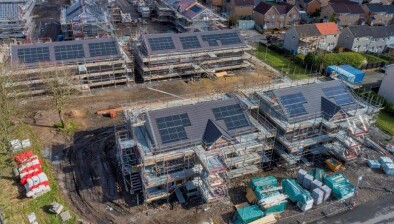Jim Baxter: My solutions to Scotland’s housing and planning issues

Jim Baxter
Following on from the recent Scottish Budget, Jim Baxter, who has been financial director at Allanwater Homes for the past 27 years, outlines what he believes can be done to help address Scotland’s housing shortage, alongside his thoughts on improving the country’s planning system.
The current Scottish planning system has been criticised for being slow, complex, and sometimes inconsistent, which can hinder residential development and fail to meet urgent housing needs. While it may not be entirely ‘broken,’ it does require significant reforms to increase efficiency and responsiveness to housing demand.
Angela Raynor recently gave some interesting insight as to where the English system is being directed and it is my belief that we should, in Scotland, take a similar view. First and foremost, we should simplify application requirements and standardise documentation to reduce administrative burdens including fully digital submissions and tracking. We need to adhere to the decision deadlines to reduce unnecessary delays and ensure staffing is sufficient to reduce backlogs – which lead to costly delays.
I believe that clear and constructive feedback at the pre-application stage would reduce later revisions, as would more frequent updating of local plans aligning them to national housing needs. Furthermore there is a whole piece of work needed on the education of communities on the benefits of additional housing – which would in turn reduce opposition to developments. By adopting such measures, the Scottish Government could create a more effective planning system that balances the need for housing development with community and environmental priorities.
Flexible zoning
Flexible zoning could definitely help ease restrictions allowing more land for housing in areas of high demand, but it needs to be combined with broader strategies to enhance land allocation and improve residential development processes.
It is not a standalone solution. A more holistic approach is necessary to address systemic issues in land use and housing supply.
Timber model of manufacturing
Thanks to its sustainability, cost-effectiveness, and alignment with modern construction trends, the timber model has been transformative in Scotland. If scaled and optimised, it could serve as a blueprint for other parts of the construction supply chain and the rest of the county is now catching up.
However, achieving success will require strategic investment in local manufacturing and a coordinated effort to reduce dependency on imported materials. Opportunities exist in incorporating locally recycled materials, for example reclaimed wood, bricks and metal, to reduce waste costs. We could promote the use of hempcrete, straw bales and other bio-materials to complement timber and diversify material options.
This extends to eco-friendly insulation and cladding products using local resources. All of the above would require fostering partnerships between manufacturers, developers and local government to support job creation and would also assist in meeting Scotland’s climate targets. And I would not be averse to government subsidies and tax incentives for local sourcing.
My unusual route into housebuilding
I joined Allanwater in 1998 after moving back from the Middle East. Glasgow born and bred; I graduated from Glasgow University with a BAcc (Bachelor of Accountancy) degree. I now live in Drymen, near beautiful Loch Lomond.
My first job was with British Aerospace in the guided weapons and space division. I then went on to work at Lucas Ingredients factory which makes quality ingredients for butchers and food retailers. From there I made the leap to Saudi Arabia on a two-year contract and ended up staying in Jeddah for ten years working in heavy haulage.
On my return to the UK, I initially worked for the holding company of the Saudi organisation before moving to Linde, the fork truck manufacturer. In 1997 an advert for a financial director for what was then Allan Water plc, a care home company, caught my eye. I officially became part of the team in 1998.
The company began to focus on renovating older properties into residential apartments, being sold on in 2006. I then slipped sideways into Allan Water Developments, the owner of Allanwater Homes, and have been here ever since. It was a defining moment in my career. I definitely found my niche at Allanwater Homes.








